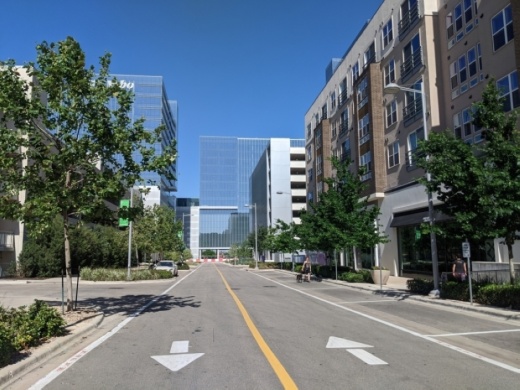The development code amendment was proposed by District 5 Council Member Ann Kitchen as an expansion of Austin's vertical mixed-use, or VMU, program. Mixed-use developments that secure the VMU designation can bypass certain zoning restrictions if they reserve some residential units for lower-income renters or owners. The VMU program has been in place since the mid-2000s and produced hundreds of affordable housing units.
The update, approved Nov. 18 in a 9-0 vote, expands the existing VMU label into two new categories: VMU1, a copy of the existing program guidelines, and a new section called VMU2. Under VMU2, the height allowance for new mixed-use buildings on city transit corridors increases from 60 feet to 90 feet if developers agree to include a greater portion of affordable spaces in such projects. The percentage of affordable housing units required for VMU2 will be calculated by city staff over the coming weeks.
Kitchen previously told Community Impact Newspaper her targeted VMU proposal was designed to build on one of the city's more successful affordable housing programs based on market demands and community input.
“This VMU option, these vertical mixed-use overlay districts, has been very successful. It is one of our affordable housing programs that’s produced results," Kitchen said last week. "I think what we’ve got here is a program that works, that it makes sense to add another option in response to what we’re seeing in the market.”
Council members came to their mid-November meeting generally supportive of Kitchen's code amendment, and they took time to discuss next steps in the process and how the affordability requirement can be successfully balanced. Mayor Steve Adler also requested that staff's calibration of the VMU2 change include a data-driven analysis of what affordability percentage could yield the most units in the long run. VMU currently requires a commitment that at least 10% of residences be available at 80% or below the area median family income, or MFI, a figure that will be adjusted for the taller projects under VMU2.
"If we can get 10 times as many affordable units at 60% [MFI] at 9% as opposed to 10% [required units] ... I’d like to know that. Or if we can't tell that, I’d like to know that," Adler said.
After running through the details of the code change, council voted to proceed with the zoning adjustment as proposed by Kitchen, and with no change to the existing VMU—now called VMU1. The change was approved at the same time the planning commission is considering its own VMU update, and council plans to follow up on the dual program revisions early next year.
The code amendment's approval also comes as council prepares for a deep dive into housing affordability and availability in Austin, set to take place during a Nov. 30 work session. Other proposals to grow the city's housing options could include an allowance for residential building in areas currently zoned as commercial-only and new rules related to accessory dwelling units, among others. Further housing discussions could take place ahead of the late November session on council's online message board.
City leaders had previously worked toward similar goals through a years-long push to rewrite Austin's land development code that was blocked last year by a citizen lawsuit opposing the process. Austin has since appealed a Travis County judge's ruling against the city, and the case's outcome is now left to a panel of justices in the Fourteenth Court of Appeals.





